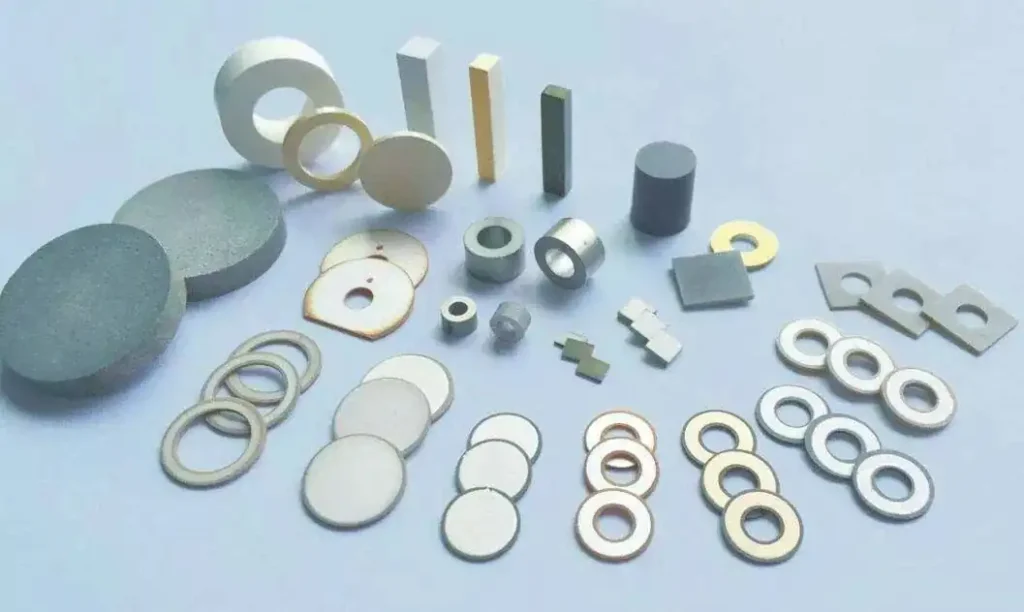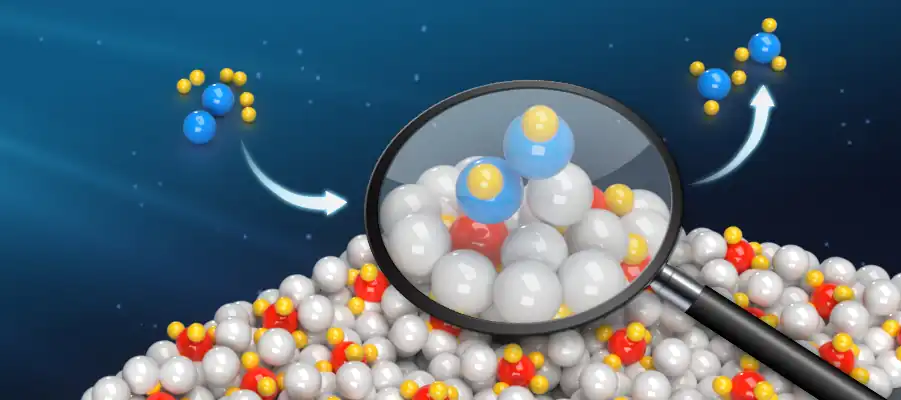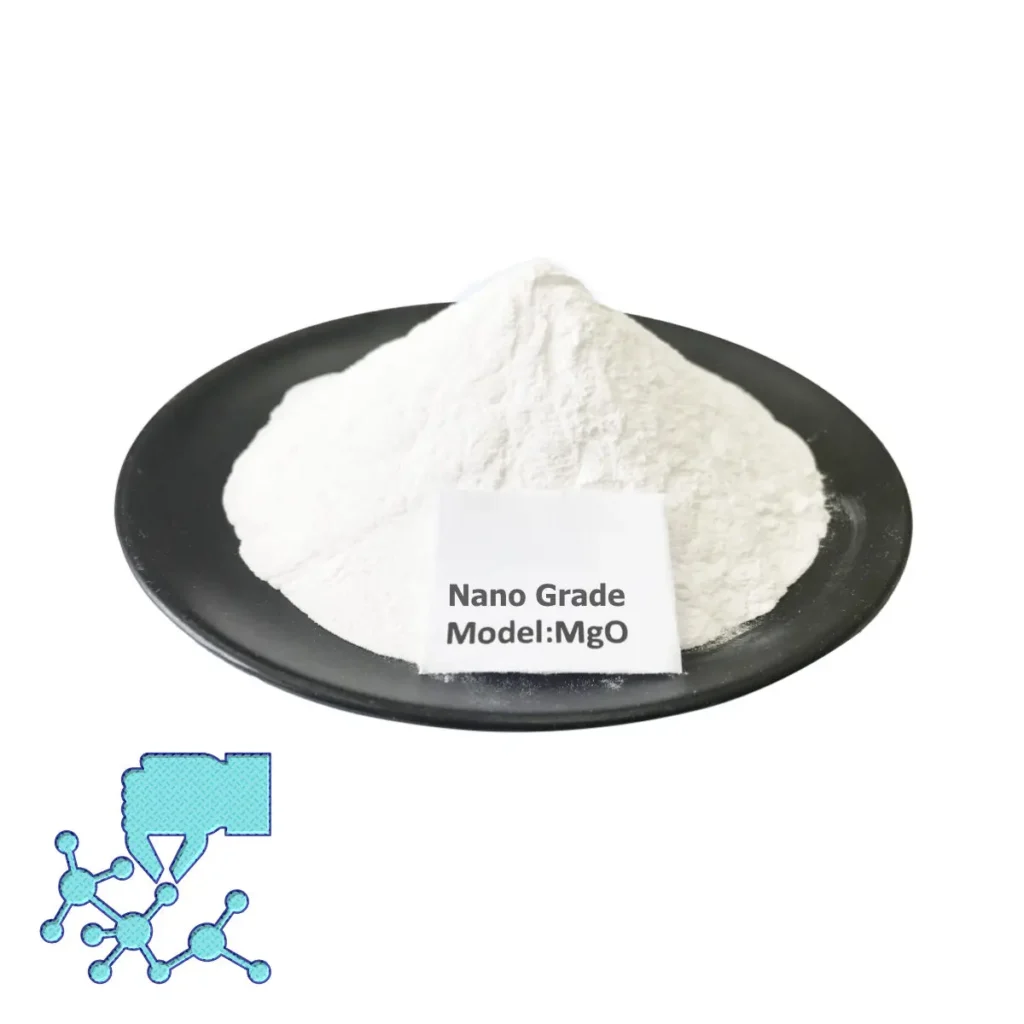Magnesium oxide has a wide range of uses and can be used in traditional fields such as steelmaking industry, metallurgical industry, rubber industry, medicine, paper industry, dyes, paints, food, fillers and cosmetics.
In recent years, with the improvement of human living standards, the natural environment has continued to deteriorate, and various bacteria and viruses have emerged in an endless stream. People urgently need to find an efficient sterilant. Nano magnesium oxide stands out because it has a large specific surface area, many lattice defects on the surface, and has strong killing properties against bacteria and viruses. In addition, nano magnesium oxide has outstanding advantages such as light weight and light color. It can effectively absorb and attenuate incident radar waves and can be used to prepare radar absorbing materials. In addition, nano magnesium oxide can also be used in emerging industries such as catalysts and nano-ceramics.
However, ordinary magnesium oxide is difficult to meet these new application requirements, so the preparation and application research of nano-magnesium oxide materials is particularly important.
Summary of 3 major preparation methods
There are many methods for preparing nano-magnesium oxide powders. Usually, they can be divided into three categories according to the existence form of raw materials, namely solid phase method, liquid phase method and gas phase method.
solid phase method
The solid phase method is to mechanically mix and grind solid phase reaction materials to a certain fineness, react at a certain temperature, or further provide mechanical energy to cause a series of physical or chemical reactions to occur in the reaction materials, thereby obtaining required oxide powder. Mainly include mechanical ball milling method, solid phase reaction method, etc.
(1) Mechanical ball milling method
The advantages of this method are simple process, high output and low cost. However, the disadvantages are that the particle size of the obtained nanoparticles is difficult to be less than 100nm, it is easy to mix with impurities, and the particle shape and particle size distribution are difficult to control. Therefore, it is usually used for powder processing. Industrial situations where particle size requirements are not high.
(2) Solid phase reaction method
It refers to the reaction or decomposition of solid materials at a certain temperature to produce nano-magnesium oxide. According to different reaction temperatures, it is divided into three types: low-temperature solid-phase reaction method, room-temperature solid-phase reaction method and high-temperature solid-phase reaction method.
The advantages of this method are that the reaction conditions are easy to control and master, and the yield of the product is high. However, the disadvantages are that the product has low crystallinity, different particle sizes, and uneven chemical composition.
liquid phase method
The liquid phase method, also commonly known as the wet chemical method, refers to the method of preparing the corresponding oxide powder from a mixed solution of soluble salts. Commonly used methods include hydrothermal method, sol-gel method, direct precipitation method, uniform precipitation method, emulsion method etc.
(1) Hydrothermal method
It refers to a chemical reaction of steam or aqueous solution in a closed container under high temperature and high pressure, and then through a series of treatments to obtain nanoparticles.
The characteristics of the hydrothermal method are that the product particle size is easy to control, the purity is high, and the dispersibility is good. However, the reaction conditions are very harsh and the actual operation is difficult.
(2) Sol-gel method
It is a preparation method with relatively mild conditions. In an organic medium (usually ethanol, etc.), organic salts or inorganic salts undergo hydrolysis, condensation and other reactions to form a stable gel in the solution, and then undergo a series of treatments to obtain nano-oxides. method.
It has the advantages of simple experimental operation, mild reaction, less by-products, good powder dispersion and uniform particle size distribution. However, there are also shortcomings such as long reaction cycle and high preparation cost.
(3) Direct precipitation method
It refers to a method in which the precipitant is directly added dropwise to the soluble magnesium salt solution, the experimental conditions are adjusted, the precipitate is precipitated from the solution, the anions are washed and removed, and the product is obtained through thermal decomposition.
This method has the advantages of low impurity content, low economic cost, simple and easy operation, and low equipment and technical requirements. However, it also has shortcomings such as serious agglomeration, poor dispersion, and wide particle size distribution.
(4) Uniform precipitation method
It means that the precipitant does not need to be added directly, but the precipitant is released evenly and slowly through a chemical reaction, and then reacts with the soluble magnesium salt to form a precipitate, which is then calcined to produce nano-magnesium oxide.
The advantages of the uniform precipitation method are that the precipitate particles have less adsorbed impurities, less agglomeration, and narrow particle distribution.
(5) Emulsion method
Through mechanical stirring or ultrasonic waves, the oil phase (usually hydrocarbons), water, electrolyte, surfactant (usually containing co-surfactant) and other components are evenly mixed to form a uniform and stable mixture system.
The emulsion method has the advantages of low preparation cost, regular shape and controllable particle size, uniform particle size distribution, and good sphericity.
gas phase method
The gas phase method can be divided into physical deposition method and chemical deposition method according to the reaction type.
The physical deposition method refers to a method in which the oxide is heated and vaporized by a high-temperature heat source (arc, plasma, etc.) under vacuum conditions, and finally condensed and deposited into particles.
Chemical deposition method refers to a method in which two or more volatile metal elements or metal compound vapors react chemically in a reaction chamber to form compounds.
The advantages of the gas phase method are adjustable reaction atmosphere, low impurity content, controllable component content, and sharp ray diffraction of the product. However, the disadvantages are high equipment requirements, complex preparation processes, high cost, high energy consumption, and large investment funds.
6 types of application areas
After the magnesium oxide particles are refined to the nanometer level, they have the common properties of nanomaterials, namely surface effect, macroscopic quantum tunneling effect, volume effect and quantum size effect. Therefore, nanomagnesium oxide has a series of novel thermal, optical, electrical, magnetic and chemical properties. It is a fine new high-functional inorganic material that not only has the uses of ordinary magnesium oxide, but also has completely new uses.
1. Nanoceramic field

Nanoceramics refer to ceramics whose crystal grain size, defect size, second phase distribution and other microstructures are all at the nanometer level.
It is usually made of unagglomerated nanoparticles of titanium oxide and zirconium oxide by high-temperature sintering method or hot pressing method, which has the advantages of good superplasticity, greater strength and hardness, and lower sintering temperature.
2. Catalyst field

Nanoparticles have a large specific surface area, so the surface effect is very significant, magnesium oxide nanoparticles are particularly prominent in this regard. The specific surface area value of magnesium oxide nanoparticles increases very significantly with the refinement of the nanoparticles and their surface energy rises rapidly.
Therefore, it has strong adsorption, high surface activity, and high surface atom utilization, which can provide adsorption base points for the catalyst.
In addition, nano-magnesium oxide as a catalyst can also increase the yield of acetylacetone products prepared by catalytic synthesis from 80% to 95%.
3. Sterilization field
The specific surface area of nano-magnesium oxide is very high, and there are many lattice defects on the surface that make it positively charged. However, bacteria such as spores and Escherichia coli have a negative charge on the surface after adsorbing nitrogen. The strong interaction between the two will cause fungi, bacteria, and viruses. Microorganisms such as these show higher killing properties.
Nanomagnesium oxide has the advantages of being odorless and non-toxic, rich in raw materials, and simple in sterilization conditions. Therefore, as a new type of sterilization material, it shows an attractive and broad prospect.
4.National defense field
In national defense applications, radar waves have important application value, so the research on absorbing materials is of great significance to national defense.

Nano-magnesium oxide has the advantages of light color, light weight, strong wave absorption ability, and thin thickness. It can flexibly and effectively attenuate and absorb radar incident waves. Therefore, it is widely used as a stealth material that absorbs radar waves.
As a new material for radar wave absorption for national defense, nanomagnesium oxide has attractive application prospects, and its research in radar absorbing materials has become one of the research hotspots.
5. Coating field
Rayleigh light scattering theory shows that nanoparticles with a particle size less than 100 nm do not emit colored light and are transparent when illuminated by visible light.

By mixing flash aluminum powder into nano-magnesium oxide powder, part of the incident light is reflected on the surface of the aluminum powder, while the other part of the incident light is dispersed through the magnesium oxide nanoparticles. The resulting astigmatism coating has extremely unique angular scattering properties.
Incorporating nano-magnesium oxide powder with this characteristic into automobile topcoat can greatly increase its brilliance.
6. Additive field
Nano-magnesium oxide can be used together with wood chips and shavings to produce refractory fiberboards and other refractory materials. Its advantages are small addition amount, non-toxic, odorless, thermal insulation, light weight, sound insulation, etc.
Compared with traditional organic flame retardants containing halogen or phosphorus, it is an ideal additive in flame retardant fibers. Tightly compacted MgO powder can also be added as an insulating layer between the metal core and metal sheath, so it is widely used as fire distribution lines.
In addition, nano-magnesium oxide can be used as an additive in multilayer ceramic capacitors to control the dielectric constant of the capacitor in the range of 2000 to 3500, reduce the capacitance change rate, reduce dielectric loss, and stabilize the performance of the capacitor.
Conclusion
Nanoscale magnesium oxide has excellent properties and wide applicability, so it is a research object favored by researchers from all over the world. Developed countries such as Japan and the United States have carried out research on nano-magnesium oxide. my country’s research on the preparation and application of nano-MgO powder started relatively late and only started in the 1990s.
Nano-magnesium oxide is widely used, especially in nano-ceramic coatings, catalysts, sterilization and other fields. Domestic corresponding enterprises and research teams should speed up research progress and seize the new market brought by nano-magnesium oxide.

